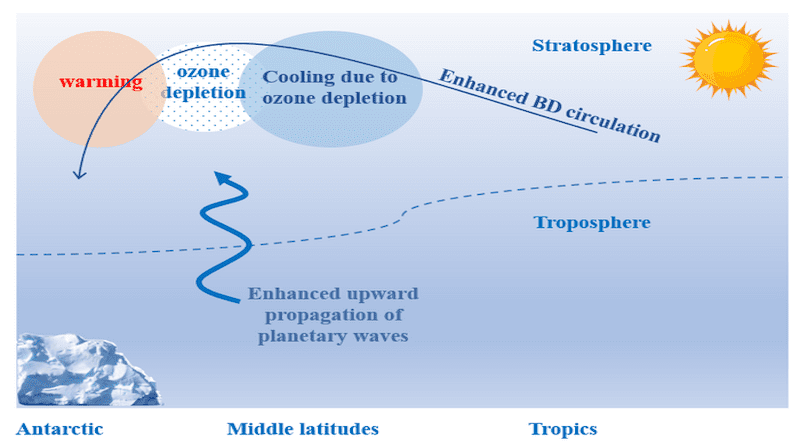Ozone Depletion Leads To Antarctic Upper-Stratospheric Warming In Winter
Since the discovery of the Antarctic ozone hole in the 1980s, numerous studies have pointed out that this depletion of ozone in the Antarctic has important impacts on global climate change, and that the changes in Antarctic stratospheric temperatures during austral winter are of great significance to ozone depletion and the formation of the ozone hole.
Previous studies have shown that, in contrast to the cooling in the lower stratosphere, temperatures in the Antarctic upper stratosphere have not been cooling; rather, significant warming has occurred in this part of the stratosphere since the 1970s. This is opposite to the radiative effects of ozone depletion and increased greenhouse gas concentrations.
Recently, Dr. Xuan Ma and Dr. Lei Wang from the Department of Atmospheric and Oceanic Sciences at Fudan University, China, pointed out that the Antarctic upper stratospheric temperature has shown significant warming since the 1970s in austral winter. These results are published in the journal Advances in Atmospheric Sciences and highlight the need for more attention to the dynamic processes in the stratosphere associated with ozone depletion.
In order to isolate the role of ozone depletion and increasing greenhouse gas concentrations, the authors used simulations from state-of-the-art chemistry–climate models that were run under different future forcing scenarios. It was found that changes in the dynamical processes associated with observed ozone depletion were largely responsible for the upper-stratospheric warming in the Antarctic.
Specifically, the radiative cooling caused by ozone depletion resulted in a stronger meridional temperature gradient between the mid and high latitudes in the upper stratosphere. This allowed more planetary waves (which are waves in the atmosphere that form as a result of Earth’s rotation) to propagate upwards and ultimately warm the Antarctic upper stratosphere. These findings could help to improve our understanding of the coupling between atmospheric chemistry and the climate in the southern upper stratosphere.
To verify the model results, the authors also performed some calculations at southern high latitudes using several reanalysis datasets (combinations of observations and model outputs used to generate estimates of the state of the system being studied). However, the quality of the reanalysis data in the upper Antarctic stratosphere needs to be further improved, calling for more accurate observations in this part of the atmosphere in the future.

